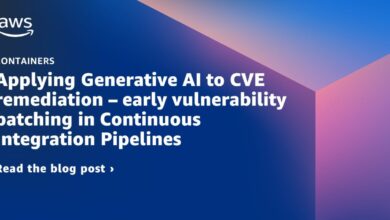70% Of M&A Leaders Look To Generative AI To Boost Returns

Everyone knows the cautionary tale of Blockbuster Video. The shorthand version is that the video-rental chain, which operated thousands of stores and reported revenues of $6 billion in 2004, had to declare bankruptcy just six years later because it disregarded the threat of online streaming services. But there’s more to the story. Many may have forgotten that co-founders of a now well-known streaming giant tried to sell their at-the-time fledgling online startup to Blockbuster in 2000 for a mere $50 million.
This recollection of the missed Blockbuster M&A opportunity came to me while speaking with business leaders about, of all things, generative AI.
This photo taken on July 26, 2020 shows the interior of the last remaining Blockbuster store, in … [+]
Expanding The Generative AI Conversation
I’ve spent a lot of time over the past year talking to executives about potential uses of generative AI in their businesses. I’m lucky in that regard since it’s a topic I find equal parts fascinating as well as game changing.
Fortunately, business leaders do, too. Our research shows that nearly all of them (85%) are investing in the technology. And they’re doing so quickly. Half of them plan on having their capabilities fully scaled in the next six to 12 months. They’re moving fast because they’ve seen the speed with which generative AI can transform any and all areas of an organization. And they’ve seen the value that can be captured by peers who quickly experiment and move to scaling generative AI as a driver of productivity across their organizations. The race is on.
Zeroing In On M&A
Many of my recent conversations with CEOs have been focused on the use of generative AI in the M&A function. That’s not surprising, given that 70% of M&A decision makers expect that generative AI can help boost expected returns on their transactions. Which brings us back to the Blockbuster story.
Of course, we will never know. But we can imagine that Blockbuster might have used generative AI to assess the feasibility of the acquisition.
That’s how more and more M&A practitioners are using it today. Accenture
Accenture
The Untapped Post-Deal Opportunity
Dealmakers also recognize that there is value to be had from generative AI in the post-deal world—but they aren’t making the most of the opportunity before them yet. Our research shows that 64% of M&A executives expect generative AI to revolutionize M&A deal processes. Yet only one-third (35%) say they are investing heavily in the technology for M&A purposes.
This is a costly oversight that would limit the likelihood of a successful integration.
Generative AI can, for example, standardize a host of post-deal tasks, streamline the design of transition service agreements and facilitate the integration of systems and infrastructures. It can also bring more creativity to the mix by rendering new operating models and organizational structures while aiding post-merger performance assessments, synergy capture acceleration and incremental opportunity identification. Together, these post-deal applications of generative AI present a huge— and relatively untapped—opportunity.
Seizing The End-To-End Opportunity
Generative AI’s contribution to M&A transaction value is substantial—especially when dealmakers lead with value and use the technology to transform pre- and post-deal activities. I’d go so far as to say that the use of generative AI across the M&A lifecycle will be a key determinant of the overall success (or failure) of deals in the future. But I believe that it will take three key points:
The first, as noted, involves identifying opportunities across the M&A lifecycle. But that must be followed with a concerted effort to reinvent talent and ways of working to make the best use of generative AI tools and insights. Dealmakers who can gather intelligence and insights faster—and free up enough time along the way to focus on making strategic design decisions—will win in the end.
Second is that M&A leaders also need to understand that a strong digital core is essential for generative AI to effectively contribute to their activities. This infrastructure must support seamless data flow and collaboration across different parts of the organization, while ensuring data security and ethical usage—key aspects of “responsible AI.”
Finally, M&A leaders who want to get the most from their investments need to adopt a mindset of continuous reinvention. The use of generative AI across the M&A lifecycle is steadily accelerating. So is the pace of change dealmakers are encountering. That means any AI-enabled M&A reinvention strategy must be dynamic. It must be designed to evolve over time. It must help prepare practitioners for what’s next.
Deal Me In
It’s an exciting time for many, and it should equally be for dealmakers. They now have a technology that can help them optimize every step of a merger or acquisition—from target identification all the way to final, post-integration execution and value capture. Of course, generative AI alone won’t ensure a deal’s success. But it can significantly improve the likelihood that we will be talking about other blockbuster deals in the future. The good kind. The kind other leaders want to emulate.

![[Webinar] Demystifying Gen AI: Insights for Legal Professionals – June 26th, 10:00 am PDT | Association of Certified E-Discovery Specialists (ACEDS) [Webinar] Demystifying Gen AI: Insights for Legal Professionals – June 26th, 10:00 am PDT | Association of Certified E-Discovery Specialists (ACEDS)](https://europeantech.news/wp-content/uploads/2024/05/1717184599_og.15858_1446-390x220.jpg)

